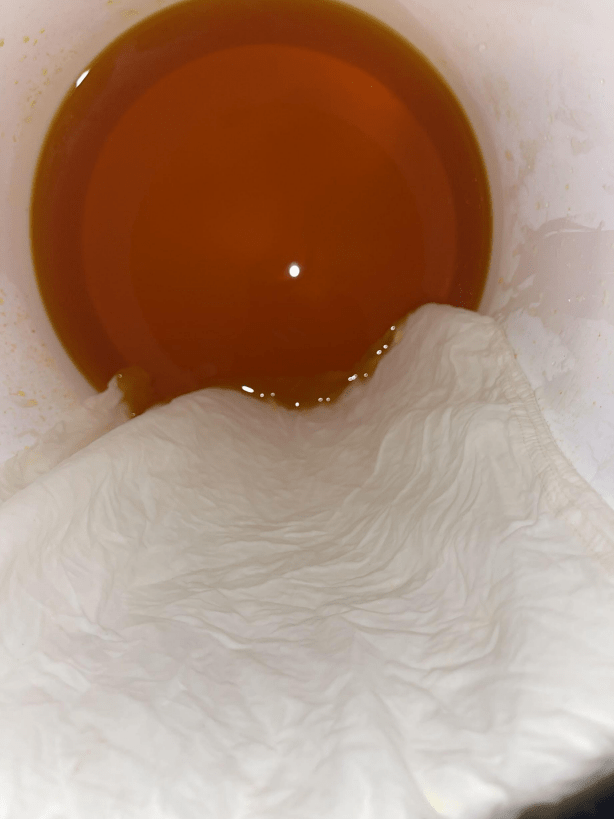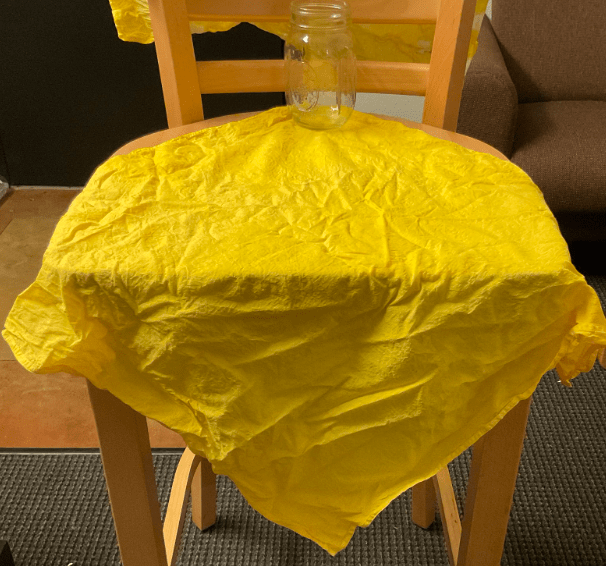Note: In Spring 2022, UC Santa Cruz students had an opportunity to participate in a virtual “Making with Marigold” workshop hosted by the Black Botany Studio and guided by visiting guest artist scholar Jennifer Steverson. In this post, one of the student participants (paradyse) reflects on his workshop experience.
____________________________________________________________________________________________
by paradyse oakley
I applied to the Making with Marigold Workshop with Black Botany Studio because of my personal interest with plants, the ancestor work and memory work, as well as my journey of becoming a Birthworker for my community. During the earlier stages of the pandemic, one of the plants that I felt called to grow in our backyard was the Marigold. It has been a beautiful journey watching it grow, practice seed saving, and planting them again for the next season. The plants grew so peaceful in the backyard with their warm and welcoming colors of yellow, orange, and red. In the Black Botanical Medicine in the Americas course at UC Santa Cruz with Dr. Jones, each week we travel with a plant. I was very excited to explore Marigold within the community.

In relation to practicing community care -I believe we take about our ancestors and bring them into the space with us as a form of grounding ourselves in the virtual space. I bring into the space my great-grandmother Betty Young – who first introduced me to gardening, the importance of connecting with the land, and patience. Through their practices of tending to their plants and herbs on their property – I think about the botanical knowledge she shared with me growing up and with my Mother. As well as the importance of honoring our ancestors and where we come from with the practice of libations, seed saving, burial, and connecting with the land.
Some knowledge that I gained from Professor Naya Jones and Jennifer Steverson in the workshop would be the very fun process of sealing the fabric to make it easier to take when completing the dye process. This included a new way of working with plant medicine – through color as we dye our cotton. Learning that we can use different plant pigments such as hibiscus, indigo, and lavender to create a natural dye.
A practice that we did at the end of the workshop, was re-dipping the plant-based cotton into our Marigold mixture for a minimum of two -three times depending on the vibrance and depth of the color we would like to achieve in the process with a five minute break in between. This was an important step and reminder that sometimes you have to take a moment to pause or moment to catch your breath. Sometimes things take time for us to achieve our intended goals, we must be willing to pivot and explore the space around us. Especially given that the Marigold plant requires a lot of sun and water.
When building a community, we were able to honor the current land that we occupy + our ancestors, introduce ourselves to the plant Marigold in terms of Black Botanical Medicine, snaps, asé, laughter, pauses, dancing, and sharing parts of ourselves with the space. I filled my space with lemongrass and eucalyptus essential oil, my plants, and fairy lights. I boiled my water with my kettle and pot, wiped out my bucket, and cleaned my tongs. My box was already prepared and blessed by the Black Botany Studio folxs – the packaging and instructions were very carefully wrapped for us to engage with in the workshop.
In the next couple of months, I’ll be heading back down to Southern California where I will continue to cultivate the knowledge that I have gained over this past academic year and plant some seeds with my siblings in our backyard.
During this time, I plan on continuing my passion of garden to table meals for my family and friends with plants, herbs, and vegetables that are grown in the backyard. I will be outdoors a lot hosting hikes, walks, and visiting National Parks, which is a perfect time to learn about the plants native to Tongva Land and where we will explore through the Picture This mobile application which assists with plant identification.
Further Reading and Resources:

all about love by bell hooks
Emergent Strategy and Pleasure Activism by adrienne maree brown
Farming While Black by Leah Penniman
The Color of Food: Stories of Race, Resilience and Farming by Natasha Bowens
Playlist for “Making with Marigold” (curated by paradyse): https://open.spotify.com/playlist/3zGiIIW0dnr1C4KNEmJ19N?si=90f79e753c1946f1
______________________________________________________
paradyse oakley, originally from South Central Los Angeles, is currently attending the University of Californian Santa Cruz and is majoring in Community Studies, Critical Race and Ethnic Studies and Politics. paradyse is currently working with the CASFS (the Center for Agroecology & Sustainable Food Systems) as a Major Outreach and Program Coordinator in the Agroecology Department. paradyse has presented their research on Healing through Eco-Grief and Radical Self-Love Healing through Hip Hop. As a Facilitator, paradyse enjoys connecting with people, works to create a brave space, and makes an ongoing effort to create a brave future to learn and grow.



